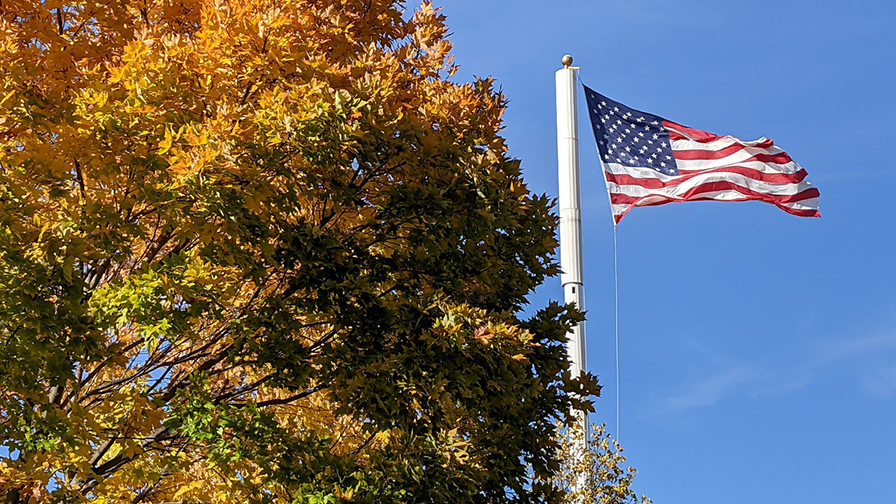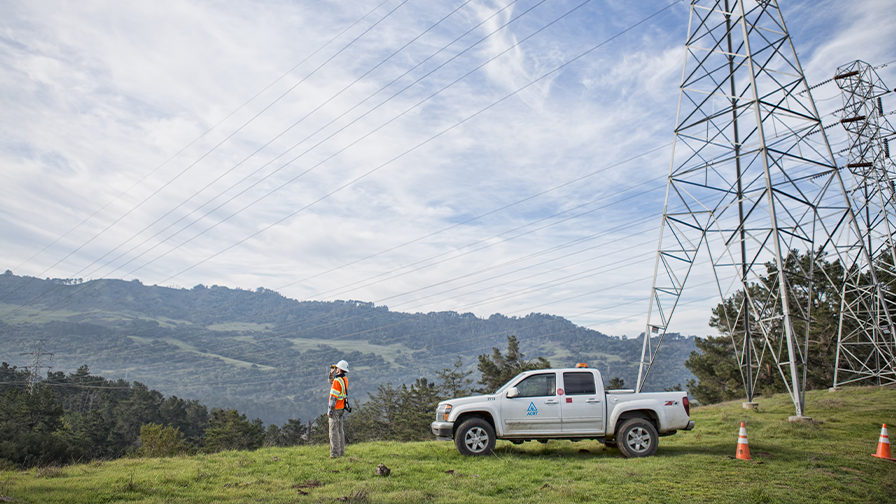- Vegetation Management Services
- Industries
- In Your Neighborhood
- About
- Careers
- Webinars
- Articles
Don’t Wing Your Environmental Stewardship: Helping the Northern Long-Eared Bat Hang in There

Don’t Wing Your Environmental Stewardship: Helping the Northern Long-Eared Bat Hang in There
Photo credit: Al Hicks/New York State Department of Environmental Conservation
What federally endangered bat species can be found in 37 states and eight provinces in North America? If you guessed the northern long-eared bat, you’re correct.
In November 2022, the species was reclassified as endangered under the Endangered Species Act (ESA).
According to the U.S. Fish and Wildlife Service (FWS), “The bat, listed as threatened in 2015, now faces extinction due to the range-wide impacts of white-nose syndrome, a deadly disease affecting hibernating bats across North America.” The updated classification took effect on Jan. 30, 2023.
The FWS also notes, “Bats are critical to healthy, functioning natural areas and contribute at least $3 billion annually to the U.S. agriculture economy through pest control and pollination.” During the warmer months, these species tend to live alone or in small colonies “underneath bark or in cavities or crevices of both live and dead trees,” and will emerge at dusk to fly along forested areas.
As utilities and associated organizations are being called upon by stakeholders and the public alike more than ever to explain their environmental stewardship efforts throughout their territories, it’s important to know and understand what species inhabit those spaces.
Environmental stewardship is more than a trend — it’s here to stay. Our Research, Science & Innovation (RSI) team is dedicated to strengthening environmental stewardship across the industry through education, collaboration, technology, and business development — including BIOaudit™ assessments.
These assessments can promote conservation and engagement in sustainable practices that support rare, threatened, and endangered species such as bees and bats.
As you inspect utilities and organizations’ surrounding vegetation, what are you doing to protect endangered species like the northern long-eared bat?
Related Articles

Alex Fields Awarded ACRT Safety Challenge Coin We are proud to recognize ACRT Consulting Utility Forester Alex as the latest recipient of the ACRT Safety Challenge Coin. ACRT Safety Manager Adrienne Jones shared the following about Fields. Alex currently serves as co-chair for our Area Safety Representatives, bringing relatability and energy to the team that[...]
Read More
Veterans Day: Honoring Our Employees’ Service On Veterans Day, we honor the veterans in our family of companies and take time to reflect on the significance of this important day. Originally known as Armistice Day, it was first recognized in 1919 to mark the end of World War I. In 1954, it was renamed Veterans[...]
Read More
Saluting Our Heroes With hearts filled with gratitude, the nation stands united on Veterans Day to honor and pay homage to the extraordinary service and sacrifices made by those who have answered the call to protect and defend the United States. Learn more about the day we honor and pay homage with these seven facts[...]
Read More
Implementing an Effective Field Audit By Bobby Purvis, safety consulting services manager, ACRT One of my favorite quotes is by Ezra Taft Benson, “It is better to prepare and prevent than it is to repair and repent.” Prevention is always better, accessible, cheaper, and safer than remediation – whether we’re talking vehicle maintenance or personal[...]
Read MoreRecent Posts
- Alex Fields Awarded ACRT Safety Challenge Coin 20th Nov 2025
- Servant Leadership in Utility Vegetation Management 12th Nov 2025
- ACRT Honors Our Veterans 10th Nov 2025
- Anna Davis Awarded Safety Challenge Coin 04th Nov 2025
- ACRT Senior Consulting Utility Forester Recognized as Safety Superstar 15th Oct 2025
Categories
The Leader In Vegetation Management
We are all about people, and we put safety first. Ready to work with our well-trained team?